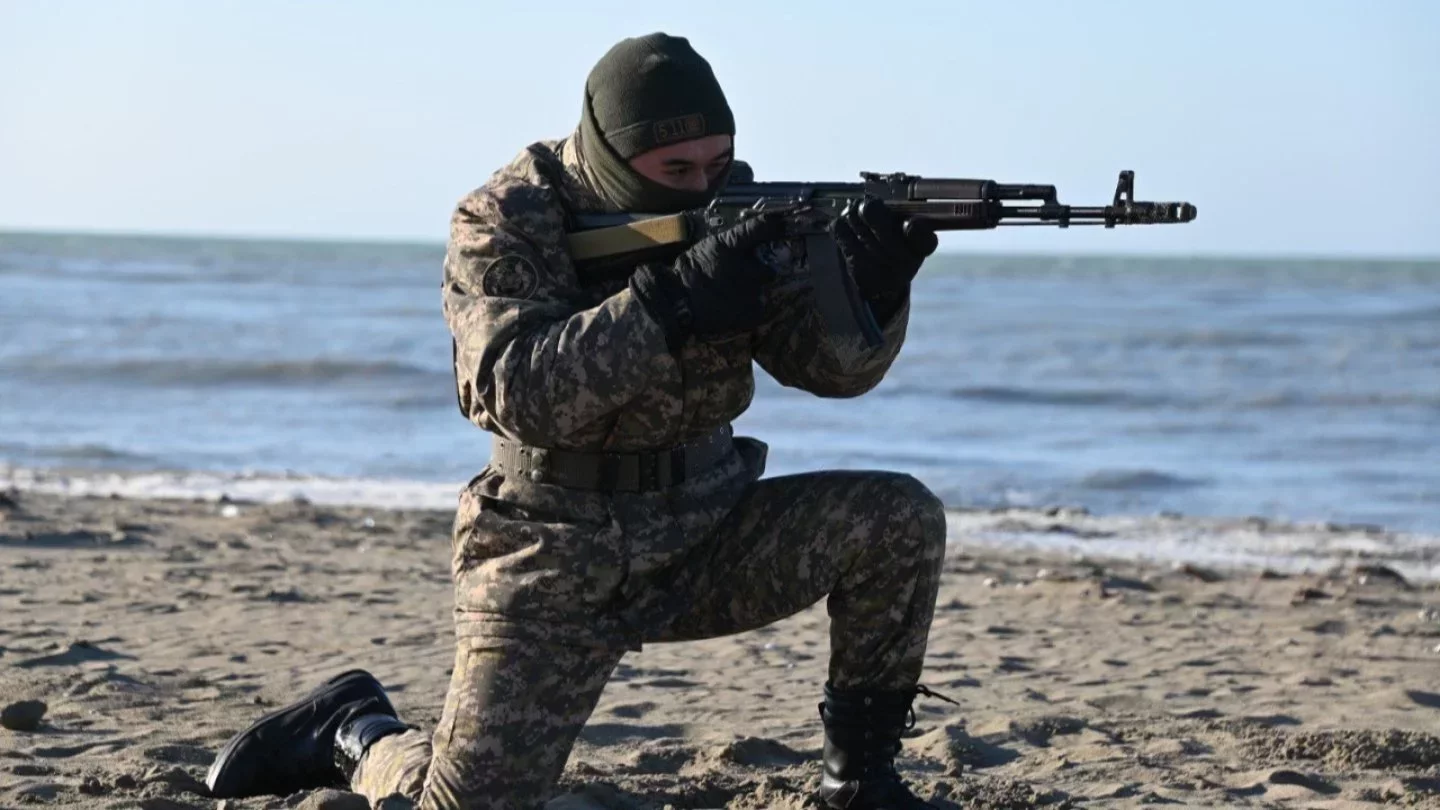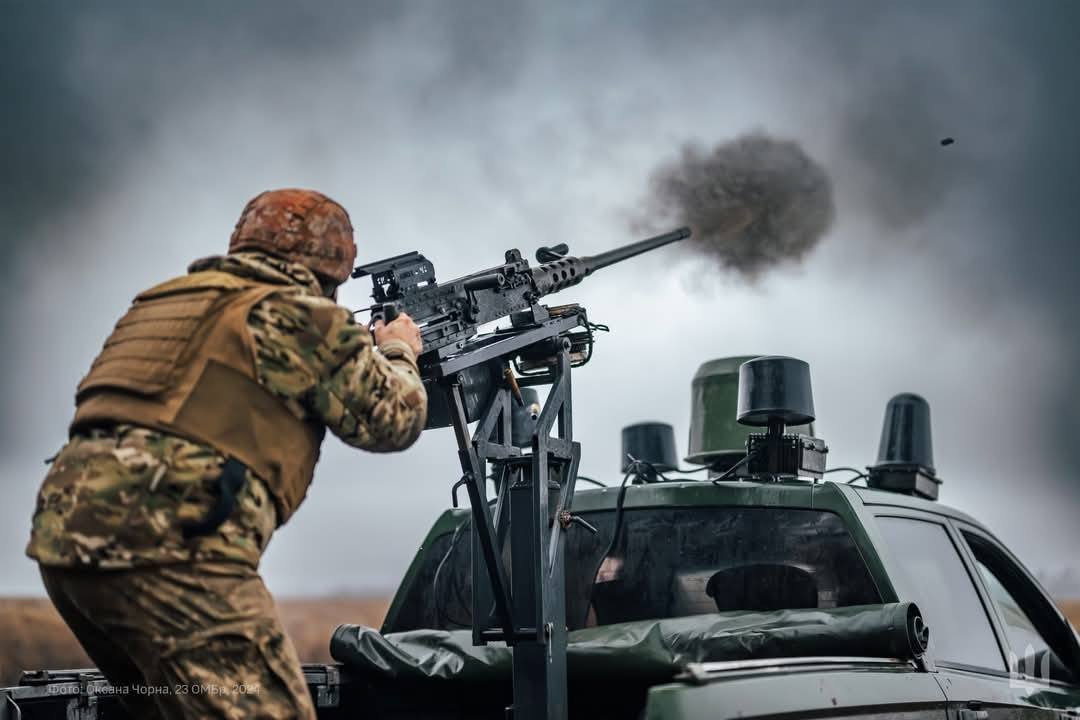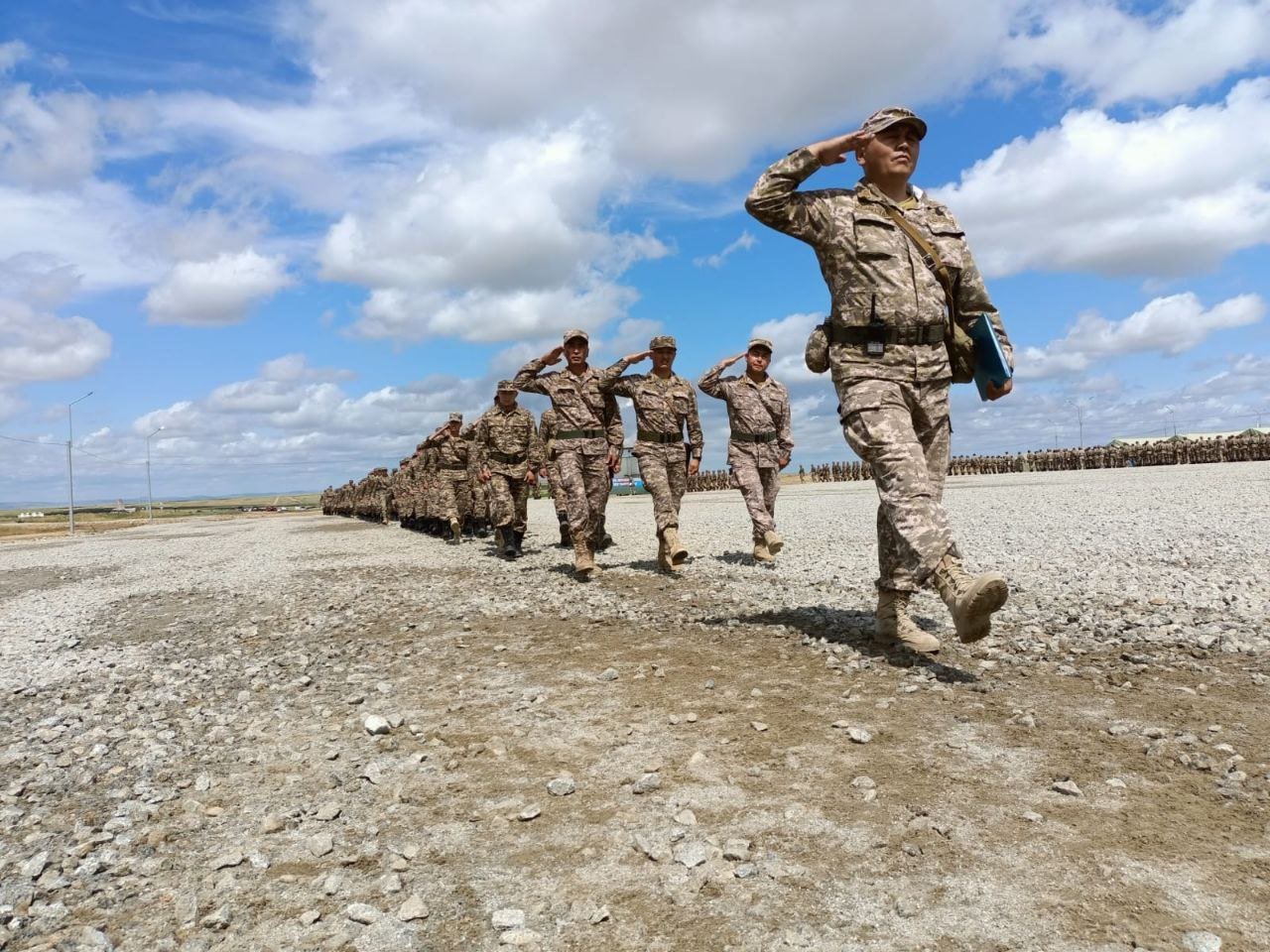Is Kazakhstan's Military Central Asia's Powerhouse? Expert Insights on Global Firepower Rankings
 Photo: The Ministry of Defense
Photo: The Ministry of Defense
A few days ago, the Global Firepower released its annual ranking of the world's armies, placing Kazakhstan in 57th place.
This marks the second year with Kazakhstan being first among Central Asian countries.
But how reliable is this ranking, and how accurate are its results?
Orda.kz posed these questions to military expert Daulet Zhumabekov.
Entertainment and General Information
The Global Firepower website has been ranking the world's armies for nearly 20 years and is frequently referenced by major media outlets.
It's particularly popular among media in countries that don't usually rank high on the list. These countries closely examine their military standings each year in the Global Firepower rankings.
In 2018, Ukraine's then-president, Petro Poroshenko, even mentioned the ranking, describing Global Firepower as "an independent, authoritative analytical center."
This sparked a small investigation by the Bellingcat. The findings from their investigation, published seven years ago, raised questions about the credibility of Global Firepower's data.
Apparently, it is run by an American blogger and web-entrepreneur named Daniel Puczek whose other online ventures include weddingdresscreator.com and other infotainment sites. GlobalFirepower.com is part of the MilitaryFactory.com network of sites and “Military Factory” is a trademark registered to Puczek." the Bellingcat publication says.
Military experts interviewed for the article also expressed doubts about the credibility of the Global Firepower rankings, pointing out significant concerns about the methodology used to compile them.
They raised significant questions regarding the methodology used to create the ratings.
The website claims to analyze over 50 different indicators, including military aspects like the overall size of the army and the numbers of ground forces, air forces, and navy.
However, the rating reportedly does not consider nuclear weapons. Beyond military factors, the rating also considers geographical elements, border lengths, financial resources, and domestic production capabilities.
Despite this extensive analysis, the authors have not disclosed their specific formula to determine military strength.
For several years, the Russian army has ranked second in this rating — above China — giving rise to the phrase "second army in the world."
In contrast, Ukraine, which has been engaged in war with Russia for nearly three years, is placed only 20th, behind countries like Japan and Egypt.

The website does not specify its sources of information about the state of the armies. It even includes a "disclaimer" section, essentially a statement of non-responsibility:
 Military expert Daulet Zhumabekov also highlights that the site gives off a strong entertainment vibe rather than a serious military analytical portal.
Military expert Daulet Zhumabekov also highlights that the site gives off a strong entertainment vibe rather than a serious military analytical portal.
He points out that when you visit Global Firepower, you’re greeted with advertising banners that don't typically belong on such a platform.
A journalist from Orda.kz was prompted to watch an ad — similar to what you find in many free mobile apps —just to gain daily access to information about individual countries.
It's All Just "Tank"
Focusing on purely military aspects, Kazakhstan stands out in the size of its armed forces, the number of combat vehicles and multiple launch rocket systems, and its military aviation — especially in terms of fighter jets.
According to Daulet Zhumabekov, aviation enabled Kazakhstan to take the top spot among Central Asian countries in the Global Firepower rating.
They do not disclose the methodology for calculating the points of their rating. But you can see that the presence of powerful aviation allows you to take a higher position. To put it simply, one aircraft is worth about ten tanks. Since Minister Altynbayev took charge in the mid-2000s, we've focused heavily on strengthening our aviation and airmobile forces. We've now purchased about 40 Su-30SM aircraft, which is nearly the size of a regiment. None of our Central Asian neighbors have such a powerful aviation force, the expert says.
According to the rating, Uzbekistan has more helicopters.

At the same time, Daulet Zhumabekov points out that there can be significant differences between the Global Firepower data on a country's military capabilities and the actual state of the army.
This discrepancy arises because any military, including Kazakhstan's, is a closed system.
During my service, many aircraft that should have been decommissioned long ago were still listed as operational. And only about 20 years later, they were finally decommissioned. And these were not one, not two, but dozens of units, the expert says.
Zhumabekov also uses the example of multiple-launch rocket systems (MLRS) to illustrate this point.
According to Global Firepower, Kazakhstan ranks 14th globally in the number of MLRS, boasting 287, with 172 deemed combat-ready.
However, he doubts that the rating creators inspected the storage facilities where the Grad systems vehicles are kept:
We inherited MLRS systems primarily from the Soviet Union. These vehicles were used a couple of times and then end up sitting idle for long stretches — sometimes a year, two, ten or even fifteen. When they finally undergo a full inspection and go back out into the field, their tires start tearing while driving. The same goes for other machinery," explains Daulet Zhumabekov.

Another issue the expert highlighted is the rating's tendency to overgeneralize.
According to Global Firepower, Kazakhstan reportedly has 7,736 combat vehicles, placing it 50th in the world.
However, the rating does not differentiate between types of vehicles — how many are infantry fighting vehicles with heavy weaponry, how many are armored personnel carriers equipped with large-caliber machine guns, and how many are lighter vehicles like "Arlans," which are not designed for heavy weaponry.
The same lack of distinction applies to other equipment categories.
When it comes to tanks, the Global Firepower rating treats vastly different models as equals. A modern Leopard 2 from the German Bundeswehr is ranked the same as a vintage T-34 from the Cuban army.
This issue is also evident in Central Asia. According to the rating, Turkmenistan leads the region in the number of tanks with 654 units, of which 392 are combat-ready, earning it 21st place globally.
Kazakhstan reportedly has 350 tanks (210 operational), and Uzbekistan 340 tanks (204 operational).
However, the International Institute for Strategic Studies data paints a different picture.
Most tanks in the Uzbek army are older T-62 variants, while Kazakhstan and Turkmenistan primarily use more modern T-72s, albeit with different modifications.
Notably, the most advanced tanks in the region — the T-90s — are in service with Kyrgyzstan, which ranks fourth in Central Asia. Yet, for Global Firepower ranking, it's all just "tank."

The presence of a navy also boosts a country's military ranking. In Central Asia, only Kazakhstan and Turkmenistan have navies.
Without access to large bodies of water, Kyrgyzstan and Tajikistan can't play this card. As for Uzbekistan, it could only have a navy if the Aral Sea were restored to its size from at least 40 years ago.
Lack of Data
Another questionable aspect is the manpower calculation.
The Global Firepower ranking categorizes them into three main groups: active military personnel, reserve, and paramilitary forces.
For Kazakhstan, the breakdown is as follows:
- 110,000 — army
- 130,000 — reserve
- 55,000 paramilitary forces
The text doesn't clarify what paramilitary is.
Daulet Zhumabekov suggests that they refer to armed groups that aren’t under the Ministry of Defense, like the National Guard, border services, etc.
According to the Global Firepower ranking, Turkmenistan only has around 3,500 border guards and similar personnel.
The figures for reserve personnel are even more perplexing. The ranking shows Tajikistan as leading in Central Asia with 600,000 reserve personnel, but oddly, it lists no reserves for Uzbekistan and Turkmenistan.
Zhumabekov thinks this is likely just an oversight:
I don’t think that they are particularly interested in our region. These are Americans with a US-centric mindset. They tend to categorize us similarly to some African nations like Chad or Niger, no one think twice about how we differ. I think the compilers just couldn’t find the numbers for reserve personnel in Uzbekistan and Turkmenistan, so they put down zero. Moreover, both countries tend to be quite closed off, providing less information even compared to us, the expert say.

Overall, Daulet Zhumabekov advises taking any rankings of the world's armies with skepticism.
The true strength of an army can only be determined in combat under specific battlefield conditions.
He also points to the example of the phrase "the second army in the world," often used to describe the Russian military:
Before the war in Ukraine began, the Russian army was ranked second in the Global Firepower listing, while the Ukrainian army held 25th place in 2021. And the second-ranked army should have been able to easily defeat the 25th-ranked one.
The expert cites the Russo-Japanese War of 1904-1905 as a historical example. If there had been a Global Firepower ranking, the Russian army would have been among the top ten.
However, it lost the war.
According to Zhumabekov, attempts to rank different armies in entirely different conditions are like asking a five-year-old boy, "Who is stronger: an elephant or a whale?"
Original Author: Igor Ulitin
Latest news
- Ulytau Officials Respond to Fine: Blogger Was Penalized Over Unfounded Corruption Claims
- Kazakhstan Lifts Gallium Export Duty
- Chinese Firm Proposes to Fund New Port and Logistics Hub in Mangystau Region
- ForteBank Stock Soars on Home Credit Deal, Then Plunges 30% in a Day
- Coins Believed to Be Tied to Kairat Satybaldyulyuly to Be Auctioned
- Ukraine’s Military Intelligence Chief Says Ceasefire Should Come Before Year’s End
- Kyrgyz Citizen Fined in Kazakhstan for Carrying Banned Book Across Border
- Trial of Former Financial Police Officers in Khorgos Case No. 1 Closed to Public Over State Secrets
- Kazakhstan to Ban Outdoor Currency Rate Displays at Exchange Offices Starting September
- Armenian Court Orders One-Month Detention for Tashir Pizza Executive Amid Ongoing Investigation
- Kazakhstan May Require Banks to Offer Deferrals to Socially Vulnerable Borrowers
- Almaty Utility Pursues Debt Collection for Unpaid Heating and Hot Water Bills
- Kazakhstan and Afghanistan Sign Railway Memorandum
- Kazakhstan's National Bank Keeps Interest Rate at 16.5%, No Cuts Expected Until 2026
- Vyacheslav Kim Finalizes Purchase of Alatau City Bank
- Wild Arman Associate Detained in UAE Over Alleged Role in Qantar Riots
- Ulytau Region Akim Sues Woman for 495,000 Tenge Over TikTok Video
- Ukrainian Entrepreneurs Move to Buy BTA Bank from Kazakh Businessman Kenes Rakishev
- Kazakhstan’s Foreign Debt Hits 170.5 Billion USD in Q1 2025
- Regulator Flags Pricing Issues in Yandex Go Audit, Company Ordered to Adjust Policies

